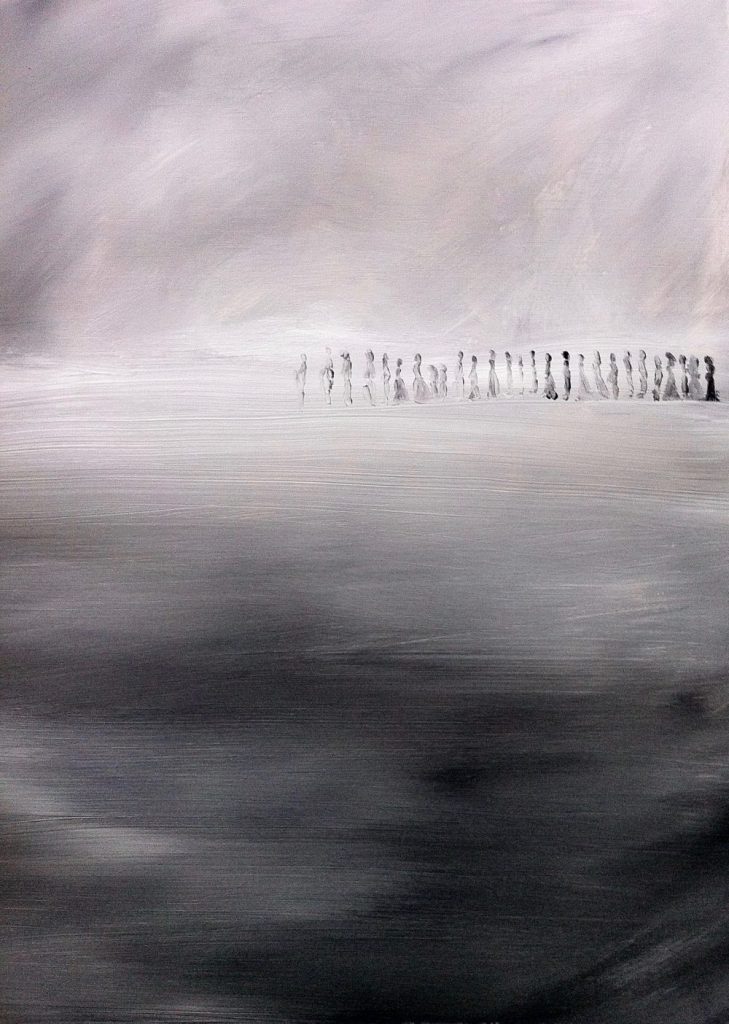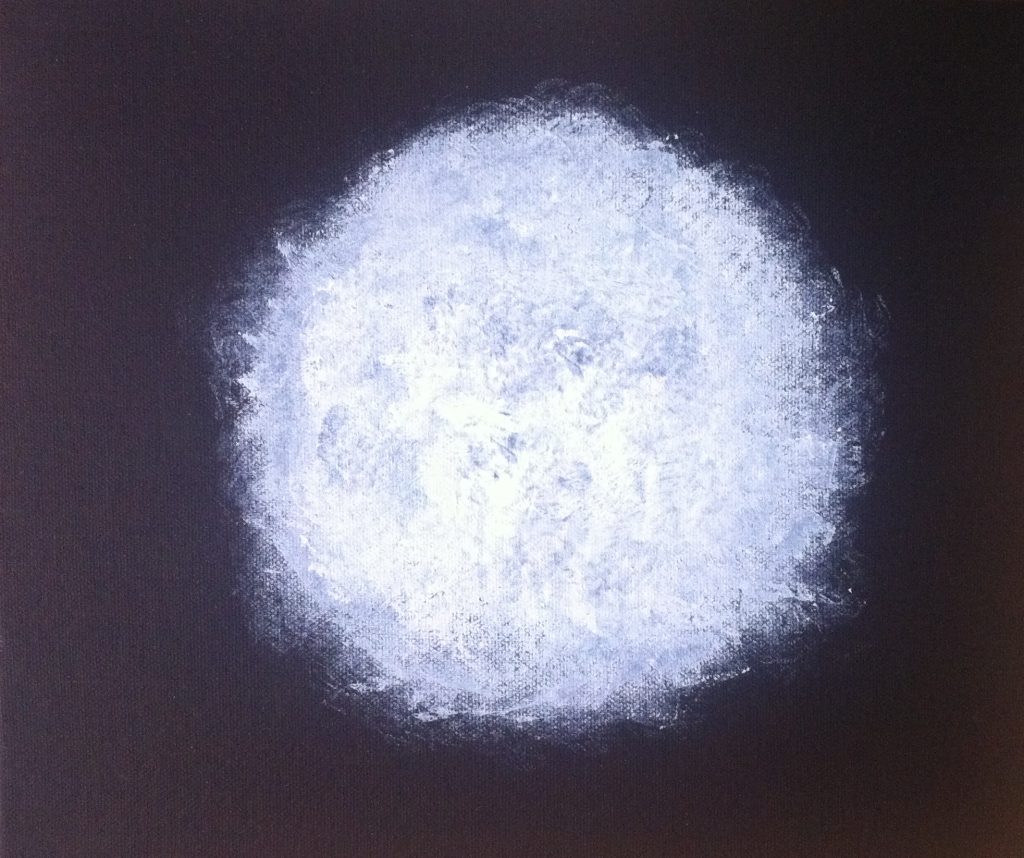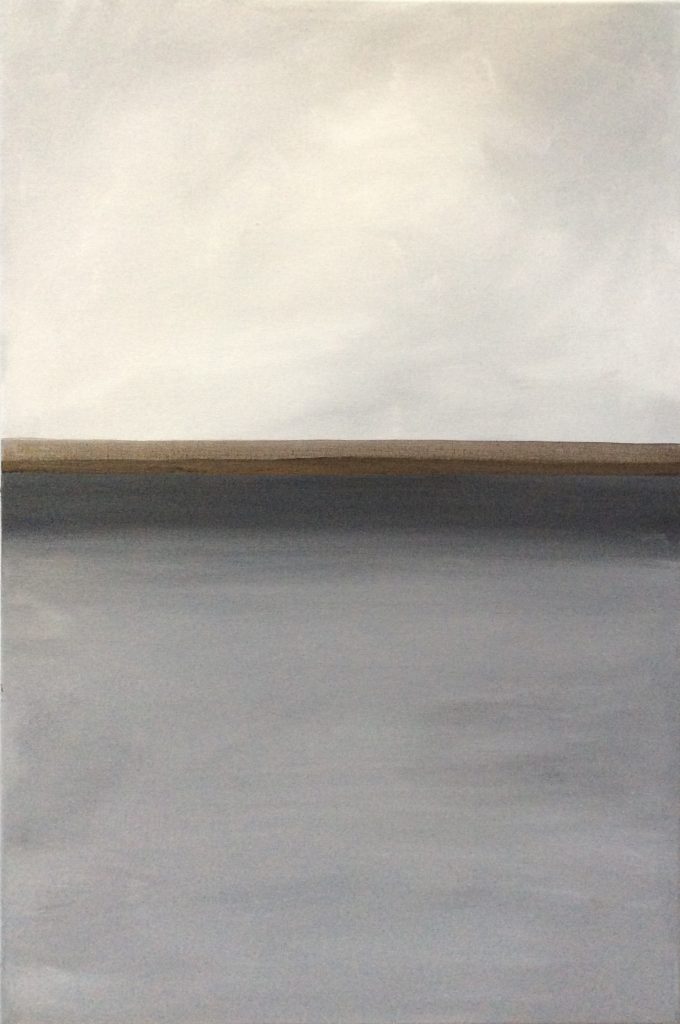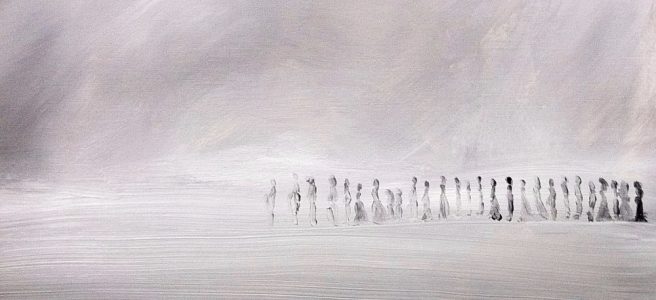On Bearing Witness

Zero-point energy is the lowest possible energy that a quantum mechanical system may have. In this project, Zero Point stands in for the contradiction of the chaotic void, the intense single point of energy and the enervated vacuum of grief, whatever its source. Each painting represents a different expression of that experience.
Before I began to find the words to express my experience, I moved paint around on canvas; pushing, pulling, smoothing, disrupting. I was trying to get at the thing behind, beneath, between. I was trying to see it, feel it, represent it. I was trying to rend the veil between my outer, coping, resilient social self and my inner selves who were struggling in their various ways.

Zero Point #2 
Zero Point #3 
Zero Point #4
My mother was diagnosed with breast cancer in 2005.
Her illness was ongoing when my husband became ill. She watched his terminal journey, fearing it might foreshadow hers: the brain metastases in particular. Daily life became dominated by one form of cancer or another. I felt surrounded by things I couldn’t see, confused by the two-faced otherness and sameness of rogue cells and unable to protect those I loved from their lurking, sinister and destructive squatters.

I found myself drawn to the form of neoplasms as things in themselves. If encountered in a more benign context, the are complex, beautiful and extraordinary natural phenomena. As viewed under electron microscopy they’re like some kind of exotic seed or marine creature.
In their final weeks and days, I sat vigil at my loved one’s bedsides, in my mind’s eye trying to see inside; to imagine what was going on at that moment, the industrious, pointless replication of cells that would ultimately wipe themselves out in the process.
The paintings were attempts to capture this experience of trying to see.
I used to think that, philosophically speaking, language was bound to miss the mark when expressing experience – that words were conceptual containers of social-historical making that inevitably constrained thought and experience by what was permitted in a given lexicon. I felt that visual art maybe did a better job of communicating what it is to be in the world. But what does an abstract painting communicate, without a label or explanation from the artist? Would a viewer look at the four images in this post and understand them as views of the same scene through different windows?
As I explored the potential of metaphor and proxy and myth and narrative I found language to be far richer and more nuanced than I’d permitted in my earlier thinking. The right words in the right order allow us to look slantwise at life, revealing experience in richer, more layered, more nuanced ways. Words, language – these are not hermetically sealed containers for experience. The myriad combinations reveal conceptual boundaries that are porous and leaky.
In Zero Point #3 above, the dark point is a throughway, a liminal threshold to another hidden space. Life and death are thus. These images are physical, visceral experience re-worked into canvas.
In 36 Hours, I want language to expand and fill-out these attempts to see. And whether it’s a painting or a text, it’s about a viewer or reader bearing witness to the microcosm of my lived experience and extrapolating this to the macrocosm of the human condition. We all die, we all grieve, we all suffer. I claim nothing unique about my losses, but my experience of them is unique to me. Maybe in sharing them, others will find validation, recognition and some comfort.
A series of blog posts about my journey through my Arts Council England Developing Your Creative Practice project.


